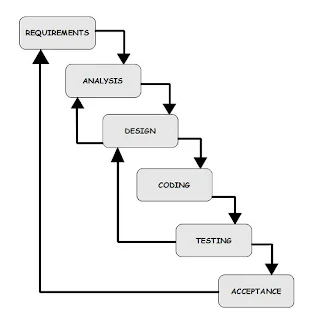What is Waterfall Model?
What is the Waterfall Model?
The Waterfall Model is one of the oldest and most straightforward software development methodologies. It follows a linear and sequential approach, making it easy to understand and implement. In this model, each phase of development must be completed before moving on to the next one, resembling a waterfall cascading downwards through various stages.
Key Phases of the Waterfall Model
The Waterfall Model consists of several distinct phases:
- Requirement Analysis: In this phase, all the requirements for the software are gathered and documented. Stakeholders, including clients and users, provide input on what they need.
- System Design: Based on the requirements, the system's architecture and design are created. This includes both high-level and detailed design documents.
- Implementation: The actual coding of the software takes place in this phase. Developers write the code based on the design documents.
- Integration and Testing: Once the code is written, it's integrated, and thorough testing is performed to find and fix any bugs or issues.
- Deployment: After successful testing, the software is deployed to the production environment for users to access.
- Maintenance: Post-deployment, the software enters the maintenance phase, where it will be updated and modified based on user feedback and new requirements.
Visual Representation of the Waterfall Model
Requirement Analysis
↓
System Design
↓
Implementation
↓
Integration and Testing
↓
Deployment
↓
MaintenanceReal-Time Example
Let’s consider a real-world example: developing a new online bookstore.
Step-by-Step Breakdown
- Requirement Analysis: The team meets with stakeholders (bookstore owners, users) to gather requirements. Requirements may include features like browsing books, searching, user accounts, and payment processing.
- System Design: The architects create design documents detailing the database structure, user interface designs, and overall system architecture.
- Implementation: Developers write the code based on the design documents, creating the website and its functionalities.
- Integration and Testing: After coding, the team tests the website thoroughly to identify and fix any bugs. This might include user acceptance testing (UAT) with actual users.
- Deployment: Once testing is complete, the online bookstore is launched for customers to use.
- Maintenance: Post-launch, the team gathers user feedback and addresses any issues that arise. This might include adding new features based on customer requests or fixing bugs.
Pros and Cons of the Waterfall Model
Advantages:
- Simplicity and Clarity: The linear approach makes it easy to understand and manage.
- Well-Documented: Each phase produces documentation, making it easier to track progress.
- Easy to manage: With distinct phases, it’s easier to manage the project and assign tasks.
Disadvantages:
- Inflexibility: Once a phase is completed, it’s challenging to go back and make changes.
- Assumes requirements are known: If requirements change during development, it can lead to delays and increased costs.
- Late testing: Bugs might not be discovered until later phases, making them more expensive to fix.
Conclusion
The Waterfall Model is a straightforward and structured approach to software development. While it works well for projects with clear requirements and limited scope for changes, it may not be the best fit for projects where requirements evolve frequently.
Understanding the Waterfall Model can help you appreciate the foundational methodologies of software development and how they influence project management and execution.




much useful :)
ReplyDeleteGood article.Thanks for sharing the post
ReplyDeleteGCP DevOps Online Training
GCP DevOps Training
GCP DevOps Training in Hyderabad
GCP DevOps Online Training Institute
GCP DevOps Training institute in Ameerpet
Google Cloud Platform Training Hyderabad
GCP DevOps Training in Ameerpet
Wonderful Article. Thanks for sharing this post
ReplyDeleteBusiness Analyst Course Online
Business Analyst Training
Business Analyst Training in Hyderabad
Business Analyst Course in Hyderabad
Business Analyst Training in Ameerpet
Business Analyst Online Training 365
Business Analyst Training in India
two abstract testing techniques and make them accessible with relatable examples. The car analogy for states and the shopping cart flow for graphs make these concepts immediately understandable for beginners. What stands out is how you connect user behavior to system logic, which is exactly how modern testers need to think.
ReplyDeleteBoth methods reinforce the value of structured thinking in testingseeing software as a living system of transitions and relationships rather than isolated functions. They’re powerful tools for identifying gaps that pure functional testing might overlook, especially in apps with complex workflows or decision logic.
For teams looking to apply these methods in real projects, using a structured platform like Tuskr test management software can make a real difference. It helps testers design, visualize, and manage state-based or graph-based scenarios efficiently, ensuring comprehensive coverage and traceability.